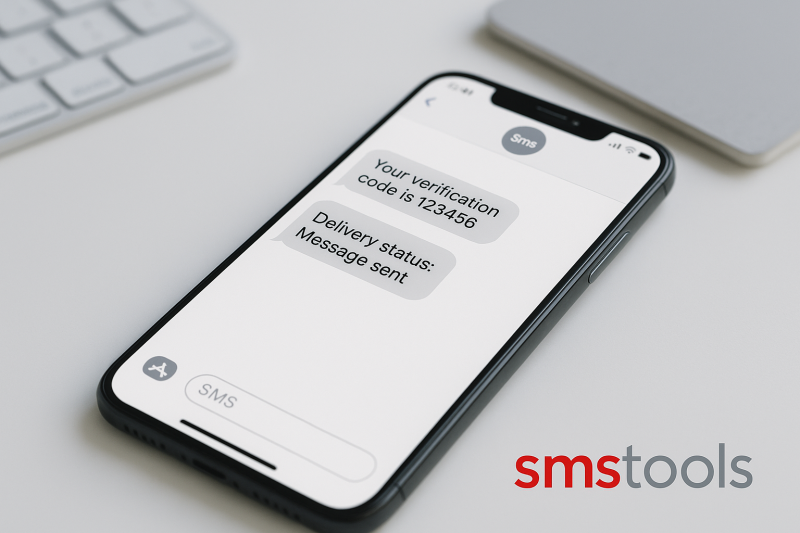Introduction to SMS APIs
An SMS API is a powerful tool that allows businesses and developers to send and receive text messages using software applications. Rather than manually sending SMS from a mobile device, an SMS API automates the process, enabling seamless integration of messaging with websites, CRM systems, and other software. This guide explains what an SMS API is, how it functions, and how organizations can use it to streamline communication.
How does an SMS API work
At its core, an SMS API acts as a bridge between your business software and the mobile networks that deliver SMS messages. Here’s how it works:
- Your application or website connects to the SMS API, often using HTTP requests (such as REST or SOAP).
- You send instructions to the API, such as the recipient’s number and the message content.
- The API processes the command and forwards the SMS through an SMS gateway to the intended mobile network.
- The recipient receives the SMS, and your application can receive status updates or replies when supported.
This process is almost instantaneous and highly scalable—ideal for sending notifications, alerts, OTP codes, marketing messages, and more.
Main features of SMS APIs
Modern SMS APIs, like the solution offered by Smstools, come packed with key features:
- Bulk messaging: Send thousands of SMS at once for campaigns or alerts.
- Two-way messaging: Receive replies and automatically process responses.
- Scheduling: Automate messages to go out at the best time.
- Personalization: Use custom fields for names, dates, or personalized offers.
- Delivery reports: Monitor the status of every message sent.
- Integration: Connect with tools like CRM systems, ERP, or marketing platforms.
- Security: Use secure authentication and manage API keys easily.
Business use cases for SMS APIs
SMS APIs are used across industries, including retail, healthcare, logistics, and financial services. Common scenarios include:
- Transactional SMS: Send order confirmations, appointment reminders, and delivery notifications.
- Marketing campaigns: Broadcast promotions, discounts, and event invites with high open rates.
- Two-factor authentication: Send OTP (one-time passwords) for secure access (learn more).
- Customer service: Enable automated responses and support via SMS.
- Internal alerts: Notify staff or technicians about urgent issues in real time.

Getting started with SMS APIs
If you want to integrate SMS messaging via API, platforms like Smstools make it easy. Here’s a typical setup process:
- Create your account: Start with a free trial to explore features.
- Generate API keys: Use a dashboard to create secure authentication keys.
- Read the documentation: Access examples, endpoints, and integration guides (see documentation).
- Connect and test: Use your preferred programming language or integration tool (e.g., Make or Zapier) to send your first SMS.
For no-code and low-code scenarios, SMS APIs can connect to platforms like Make.com and Zapier for automated workflows without any coding required.
Why choose an SMS API
Some advantages of using an SMS API include:
- Faster and more reliable delivery than manual messaging
- Lower costs for large-volume messaging
- Easy scalability for both small businesses and large enterprises
- Rich integration options for complete automation
- Improved monitoring, analytics, and control
How Smstools can help
With nearly two decades of experience in Europe, Smstools provides a robust SMS API designed for seamless integration, cost-effective bulk SMS, reliable delivery, and support for automated marketing. Whether you’re a developer, agency, or business owner, you can benefit from features such as:
- Simple REST API, full documentation, and sample code
- Advanced automation options for events like birthday SMS or OTPs
- Support for WhatsApp and voice messaging as your campaigns evolve
- Solutions for virtual numbers and SIM card hosting, so you stay flexible
Get started and unlock the power of SMS automation: REGISTER
FAQ: SMS API explained
- What is an SMS API? An SMS API is a programming interface that lets applications send and receive SMS automatically.
- Who uses SMS APIs? Businesses, developers, agencies, and marketers use SMS APIs for bulk messaging, alerts, and integration with other systems.
- Can I receive SMS with an API? Yes, some APIs (like Smstools) support two-way messaging and receiving SMS using virtual numbers.
- How secure are SMS APIs? They use authentication with API keys and secure connections. Always protect your credentials.
- How do I start? Sign up for a free trial, generate API keys, and follow the integration guide.
What is an SMS API and how does it work


